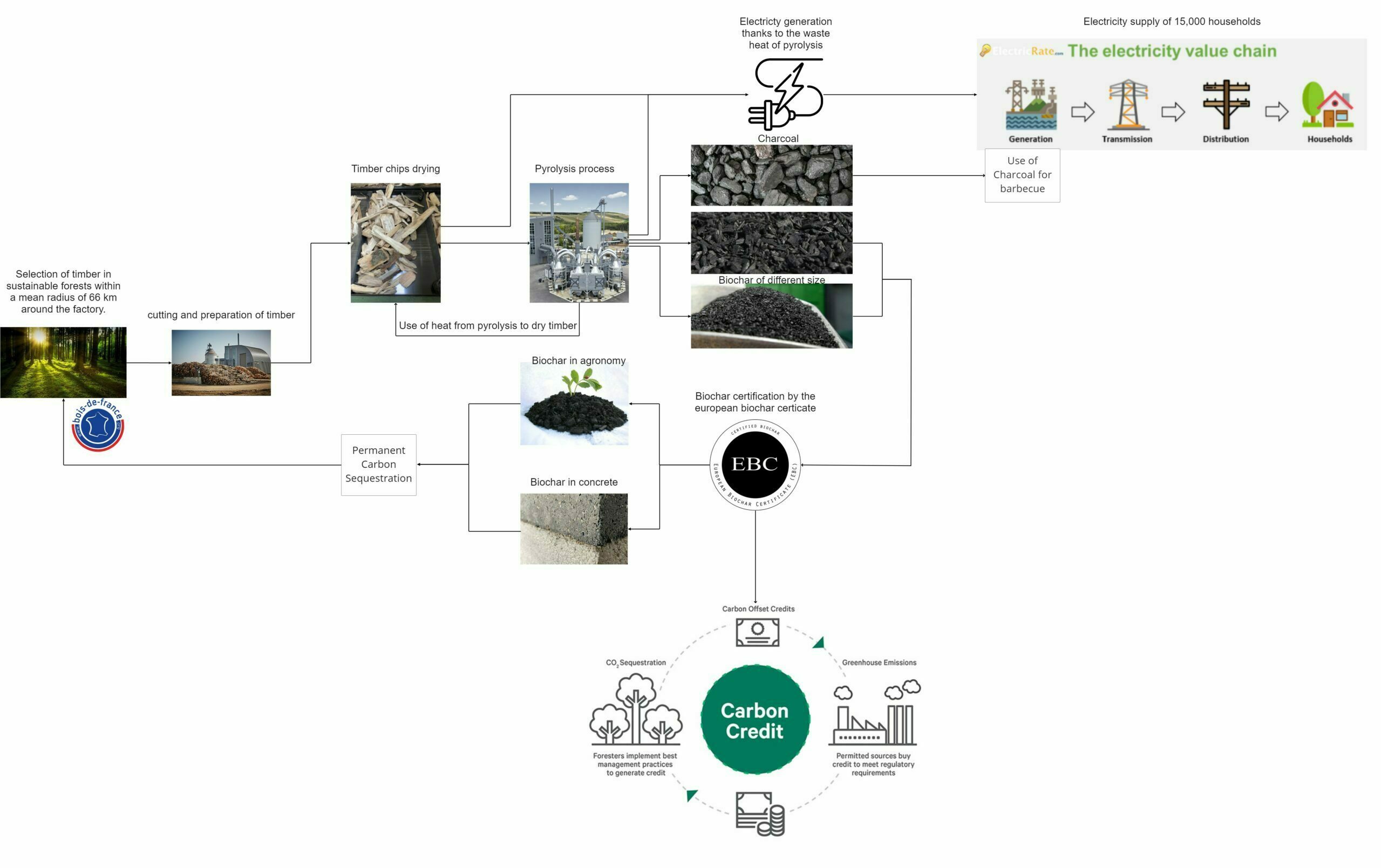In order to give a better overview of what is biochar, we have detailled its main charatceristics and its production.
Overall description:
Our biochar is a product derived from organic matter (mostly timber) obtained by pyrolysis and has a high concentration of carbon. Pyrolysis enables the recovery of energy from biomass. This energy is clean and renewable if biomass is produced sustainably. The pyrolysis of the Carbon Centric biochar allows it to have an exceptional purity which is ideal for technical applications.
Different types of biochar depend on their particle size, thus influencing the behaviour of biochar. Indeed, Carbon Centric produces and sells two types of biochar: regular (0-20 mm) and fine (0-2mm).
Usual Use of our Biochar:
Our biochar has proven its excellent properties in two different areas. Its first use is in concrete or asphalt, as it ensures a considerable shrinkage in the CO2 emissions (up to 95%) of a concrete block or asphalt.
Moreover, besides being a “carbon sink”, biochar has excellent properties in agronomy. Indeed, thanks to its porosity and pores design, water retention is optimized as it allows water to be sufficiently held while enabling it to be released afterwards. This ensures the well-being of plants and microorganisms.
However, more possibilities exist for biochar, and further research is run to find other implementation areas.
Here are some pictures on our 2 different granulometry of biochar which are, from left to right 0-20 mm and 0-2 mm


Technical description
One of the great advantages of biochar is its water retention capacity (231%). Indeed, one ton of biochar can retain 2,139 tons of water.
In addition to this large amount retained, the biochar releases water as the soil needs it. Thus, it ensures a constant supply of water to the plants. However, this water retention capacity will depend on the moisture content of the requested biochar.
Biochar production
Here is a diagram summarizing the production of biochar. This diagram summarizes all the stages of the life of biochar, starting from the selection of the trees in the forests until the permanent sequestration of carbon.



